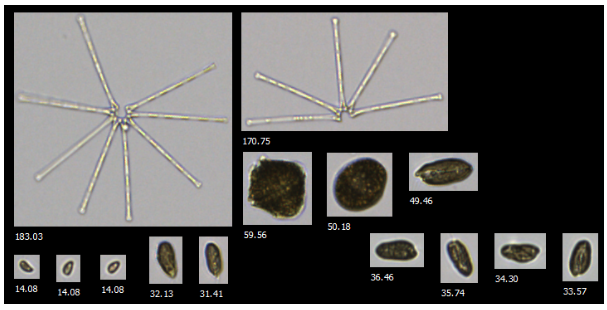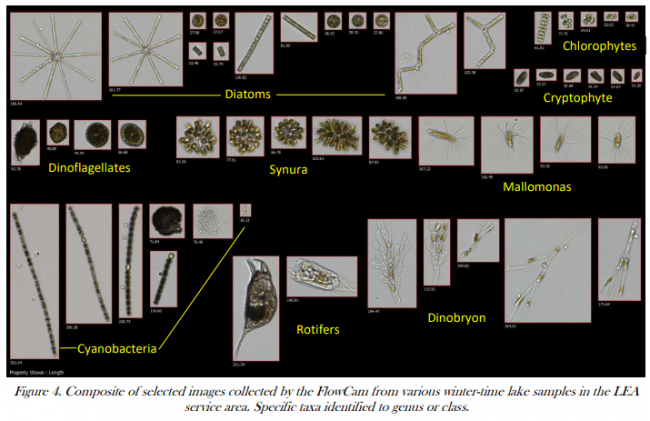
Keoka Lake’s monthly fluorescence, oxygen, and temperature profiles. Chlorophyll concentration (green line), dissolved oxygen concentration (blue line), and temperature data (red line) were collected at every meter from the surface to the bottom from May through September.
Throughout the season, algae concentrations tended to be lower near the surface and higher near the thermocline. While fluorescence readings were highest in June, each month except May saw a fluorescence peak, often near the thermocline. These higher readings were between 5 and 6 meters making them below the portion of the water column that people usually use. Most elevated readings tended to occur near the thermocline meaning that those elevated readings are represented in the chlorophyll samples analyzed in the Water Quality figure above.

Gloeotrichia echinulata (a type of cyanobacteria (blue-green algae) commonly found in low-nutrient waters) can be seen with the naked eye. Gloeo density is reported as a value ranging from 0 – 6, based on the number of Gloeo colonies seen through a Secchi scope. Higher values indicate more Gloeo colonies. Keoka Lake’s Gloeotrichia echenulata colonies were observed in August this year with densities ranging from 0.5 – 1 on the Gloeo density scale.

